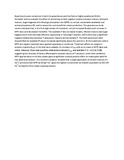| dc.description.abstract | Experiments were conducted in both the greenhouse and the field on highly weathered (Orthic Ferralsol) soils to evaluate the effect of combining on-farm organic residues (chicken manure, farmyard manure, sugar bagasse) with Minjingu phosphate rock (MPR) on soil pH, extractable (available) and sorbed phosphorus (P), and to assess the cost benefit for maize production. The greenhouse study results indicated that, in the first eight weeks of incubation, soil pH increased linearly with increase in MPR rates and decreased thereafter. The available P also increased linearly. Chicken manure and sugar bagasse were most and least effective respectively in reducing P sorption, while there was a significant negative relationship between P adsorption maxima and extractable P. The field experiment data showed that the available P values increased significantly above the control in all the treatments where MPR and organic materials were applied separately or combined. Treatment effects on Langmuir sorption maxima (Smax) in the field were variable. An increase in Smax with an increase in MPR rates was noted. However, there was a positive relationship between Smax and available P (r = 0.52 to 0.69), suggesting the diversity of factors affecting the complex nature of P dynamics under field conditions. MPR applied alone in the first season gave a significant residual positive effect on maize grain yield for two additional seasons. The economic analysis revealed that a single application of chicken manure (2 t ha−1) combined with MPR at 60 kg P ha−1 gave the highest incremental net benefit equivalent to US$ 657 ha−1 during the three maize cropping seasons. | en_US |

